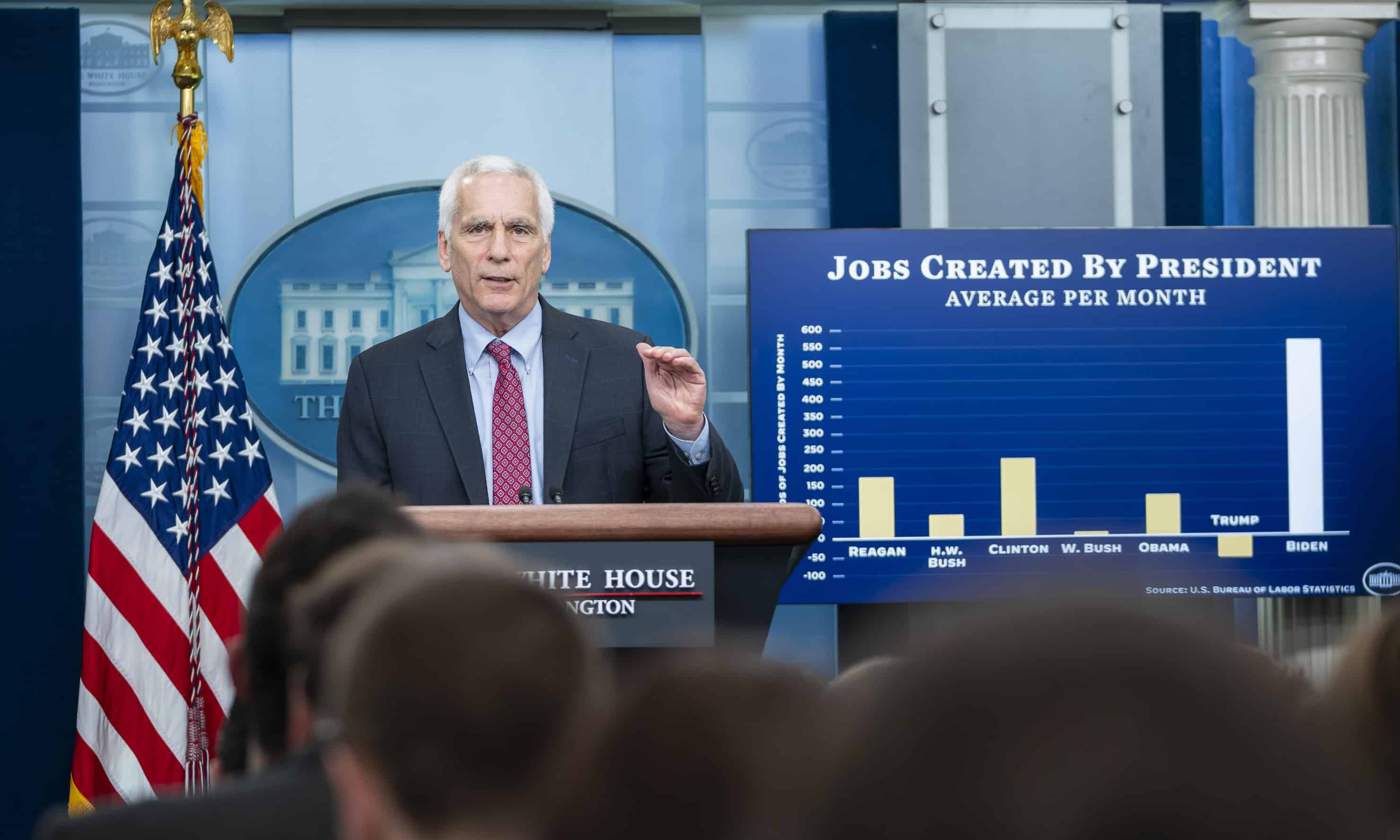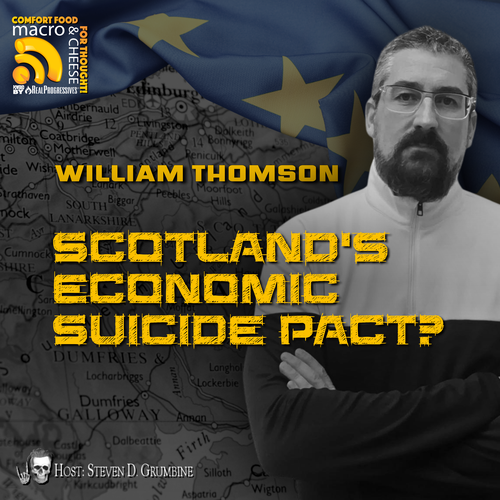Originally posted on January 10, 2018 at the New Economic Perspectives blog.
Responses are written by Stephanie Kelton and Randall Wray.
A few days ago, Jared Bernstein posed some Questions for the MMTers in order to gain a “better understanding [of our] arguments.” We appreciate his interest in our ideas and, especially, his direct appeal for clarification of our views. He raised four big questions, which our Australian counterpart, Bill Mitchell, has already answered in his own three-part series. What follows is a response from two North American MMTers.
Jared: Overheating is possible, and taxing is a lousy mechanism for dealing with it.
We agree that relying on Congress to raise/lower taxes to fine-tune the economy will not succeed. We agree with Janet Yellen that stronger automatic stabilizers are needed to enhance cyclical stability, taking pressure off lawmakers (and the Fed) to be responsive to changing conditions in the economy. Having said that, we would note that our tax system is likely already too biased to pull in more revenue when the economy booms, as evidenced by the expansion-killing surplus during the Clinton years.
We would add, as Jamie Galbraith rightly argues, that overheating, while possible, hasn’t happened in at least two generations. As Jamie says, “There hasn’t been inflation in the economy since the early 1980s. It collapsed with the end of the Soviet Union and with the rise of China as a supplier for consumer goods. So the Fed has been patting itself on the back for decades [of] holding back a phenomenon that doesn’t exist. [The Fed is like] the little Dutch boy with the finger in the dike who never troubles himself to look over the levy to see that the lake is dry.” In other words, it’s been a couple of generations since the US economy experienced any significant inflation. Since then, inflation has become a highly global phenomenon.
We also note that neither mainstream academic economists nor the Fed itself have a robust theory of inflation. By contrast, the academic economists who created MMT have a long history of studying inflation and formulating policy to fight it should overheating ever become a problem. See, for example, Papdimitriou and Wray 1992, Bill Mitchell, and the new MMT textbook by Mitchell, Wray, and Watts.
In any case, relying on the Fed is the worst possible way to try to fight “overheating.” As the Bank of England has explained, central banks do not control the money supply nor do they have the tools to forcibly choke off an expansion of bank credit in order to fight inflation. The plain fact is that the Fed cannot “take money out of the economy”—as Jared presumes—like some kind of pickpocket rifling through our jeans in the dark of night. It relies on the overnight interbank lending rate (fed funds rate) as a policy instrument. It can take excess reserves out of banks (or put them into banks—e.g. via Quantitative Easing), but this does not work like a brake pedal or a gas pedal on bank lending—which is how money gets into the economy. No central banker today believes she can “take money out of the economy” as Jared puts it.
While we will not go into it in detail here, we recommend a public option—called the Job Guarantee—in the job market at a base wage to anchor the currency, helping to stabilize its domestic value against inflationary/deflationary pressure as well as stabilizing its exchange value against other currencies. MMT has devoted thousands of pages of research and over a quarter of century to analyzing and reporting of the results. Indeed, we have completed a major study using conventional modeling techniques that shows that a universal job guarantee program would provide true full employment while actually moderating inflation.
Finally, we remind Jared that contractionary fiscal policy (tax hikes or spending cuts) is presented in standard macro textbooks (of the Keynesian variety) as the appropriate way to deal with an overheating economy. In other words, there is no daylight between Functional Finance/MMTers and conventional Keynesian theory when it comes to the idea of raising taxes to counter overheating. Nowhere in the mainstream discussion of the Keynesian approach is there handwringing about the politics involved in getting a political body (Parliament, Congress, etc.) to carry out the fiscal tightening needed to curb inflationary pressure. Hence, Jared is not really raising a critique of MMT at all—but rather is critiquing long-standing advocacy of use of fiscal policy that has appeared in every “Keynesian” macro textbook published since WWII.
Jared: What about the Fed? The central bank introduces another piece of the MMT framework about which I’m confused. Suppose, even if the economy is below potential, the Fed decides it doesn’t like all this money-printing and deficit spending advocated by MMTers.
First, let’s be clear: The Fed cannot ‘Just Say No’ to Congress. As Bernanke said, “We’ll do whatever Congress tells us to do.” And when it comes to deficit spending, the Fed works hand-in-glove with Treasury, coordinating operations to ensure a) payments always clear and b) bond auctions never fail. Its “independence” is actually limited to Congress’s willingness to let it set the overnight interest rate (which can be revoked if Congress decides to do so—as it did during both World Wars). See here for further elaboration. Neither the Fed nor any other country with control of its own central bank has ever bounced its own treasury’s check—and none of them will ever do so. Just listen to this panel of financial market experts, including Glen Hadden, former head of interest-rate trading at Morgan Stanley, if you doubt whether MMT has this right.
Yes, the Fed could decide to hike rates to fight against expansionary fiscal policy. But it would not do so in order to teach Congress a lesson. The Fed has a dual-mandate, and it will not raise rates sharply in the absence of credible evidence that inflation is poised to accelerate. All the money-financed deficit spending in the world won’t provoke the Fed if inflation is subdued. And the explicit goal of Functional Finance/MMT is to allow the budget deficit to fluctuate, as needed, to maintain full employment and price stability. Why would the Fed fight its own dual mandate? Far better to sit back and take credit.
The bottom line is that the Fed does not have veto rights over Congress. We rest assured by the twin facts that a) the Fed is a creature of Congress and can be brought to heel should that become necessary, and b) that the exigencies of providing a smoothly functioning payments system leaves no room for the Fed to veto the Congressionally-approved budget under which the Administration operates.
Jared: Krugman’s “finance-ability” point: Krugman argues that self-financing is more inflationary that bond issuance, but he’s not making the above points about MMTs flawed (IMO) assumption that tax cuts could handily deal with accelerating prices. He’s worried about currency debasing:
We can address this one very quickly. The Krugman point you raise is from 2011. Scott Fullwiler addressed it back then. But it hardly seems relevant any longer, given that Krugman has since recognized that it makes no difference, economically, whether deficits are bond-financed or money-financed. And if it makes no difference, then either both risk debasement or neither does. As Kelton and Fullwiler explained in a Financial Times Alphaville blog, the only possible difference is political, and on that front money-financed deficit spending wins out because budget deficits no longer add to the national debt. With respect to “finance-ability” and the idea that investors could somehow prevent the government from accessing the bond market, except at a punishing premium, we refer you back to the link above, featuring Glen Hadden and Amar Reganti, former Deputy Director of the Office of Debt Management at Treasury or to remarks by former Undersecretary of the Treasury Secretary, Frank Newman. It is not enough to hand-wave a conclusion that money-financed deficits will lead to currency debasement or risk a sharp rebuke from investors. You need to be able to demonstrate, operationally, why those might be legitimate risks. Close study of the monetary operations, confirmed by experts in the field, suggests the MMTers have this right.
Jared: Timing issues re revenue raising vs. printing money: A theme of my work, to which MMTers often object, I think, is that we need to raise more revenues to pay for public goods. I recently wrote, for example, that, given our aging population, it will take something like 3% more of GDP to meet our obligations to Social Security and Medicare/Medicaid by 2035. MMTers push back that as long as we’re below potential, we can print the money to support government spending, so stop getting so wound up about “payfors.”
Even Alan Greenspan’s testimony about the long-run implications of an aging population rightly rejected any possibility that government might “run out of money.” Government can and will make all payments as they come due.
In truth, budget deficits are always ex post (the difference between spending (G) and tax receipts (T) cannot be known until after that year’s spending and taxing has taken place). There are three sectoral balances: a domestic private sector, a government sector, and a foreign sector. While any one of these can run a deficit (or surplus), the sum of the balances must sum to zero—that is, they balance (for every deficit there is a surplus). In the US, the private sector almost always runs a surplus (“saves”) and the foreign sector has run persistent surpluses (the other side of the coin to our current account deficits) since the days of Reagan. That means—by simple identity—that our government sector runs deficits.
This actually has been the norm since the founding of the nation over 225 years ago. Government deficits will continue to occur so long as the sum of the private and foreign balances are positive. While almost universally feared, government deficits are actually the source of the positive net balances in our household and business sector. While our generation today cannot dictate or even influence what the government’s balance will look like 30 years down the road, we can safely predict that it will be in deficit. If critics of MMT would study the work of Wynne Godley they would understand this.
Given aging, we need to shift 3% more of GDP to elderly over the coming decades. However, this will be done at the time we want to achieve the shift and it will be done through a combination of taxes on those of working age and spending on those of retirement age. This has nothing to do with deficits in those years (it will need to occur whether or not there are budget deficits or surpluses then)—and neither deficits nor surpluses today will either enable or constrain those deficits in the future should they occur.
Only someone who is confused about simple aggregate accounting would think that it is proper to tighten the fiscal stance today in order to “keep the powder dry” for use later as the fuel to support deficits to deal with the problems of aging. The best way to prepare for an aging society is to start building the infrastructure, the care system, and the know-how we will need to take care of tomorrow’s seniors.
63 RESPONSES TO “ANSWERS FROM THE MMTERS”
Paul | January 10, 2018 at 8:02 pm |Good response and without the reeking condescension of the Australian series.
GrkStav | January 11, 2018 at 3:40 pm |Gotta love the attempt at “tone-policing” Bill Mitchell. He’s got every right to be righteously indignant.
Steven Greenberg | January 10, 2018 at 8:17 pm |There is one issue that MMT tends to gloss over. The static accounting balances of the three sectors is true, but that does not necessarily constrain the economy in the short term. MMT has made the argument that with bank created money there is a debit for every credit. What they fail to talk about is that the debit to the private sector is the loan that must be paid back in the future, whereas the money given out in the loan is an immediate credit to the private sector. This time difference in the flow of money has a profound impact on the economy, but not on the accounting static balance. Ironically this very article does admit that Central Banks do not control the money supply.I am not doubting the validity of MMT so much as I am asking MMTers to stop emphasizing the accounting static balance as an explanation. That is too easy to poke a hole in to try to use this to explain MMT to the unconvinced.
Sam | January 11, 2018 at 9:33 am |The point about sectoral balances is about medium-to-long term sustainability, not about short-term spending. Private sector deficits result in the deterioration of private financial positions, which is unsustainable.
GrkStav | January 11, 2018 at 3:46 pm |What amazes me is that you actually think that you’ve identified a lacuna in MMT’s argument or logic, that MMT academics, for whom “endogenous money” is imbibed with proverbial ‘mother’s milk’, do not appreciate the implications of changes in net lending/borrowing for “the economy”.There is nothing “ironic” in the article. The very fact that you chose to use “admit” (that Central Banks do not control the money supply) indicates that you’re very much *not* in a position to offer advice to MMTers, as you’re basically quite ignorant of their argument.
Francisco Flores | January 11, 2018 at 3:53 pm |Steve:
Not seeing what hole you’re poking. Please explain.
RE: “… This time difference in the flow of money has a profound impact on the economy, but not on the accounting static balance. …”
– Are you talking about bank created money?
Bank: dr Loan Rcble, cr Deposit
Private Sector Actor: dr Deposit at Bank, cr Loan Payable
– So what’s the time difference?Steven Greenberg | January 12, 2018 at 9:10 am |The time difference is most extreme when you consider a mortgage. When you take out a mortgage, you get the money right away to buy the house. You don’t have to pay back the entire sum for 30 years. Capitalism didn’t invent the idea of buy now pay later if there weren’t some significant economic impact of that idea. Yet, in accounting static terms, the mortgage debt that you pay off in 30 years exactly balances the money you get to spend immediately to buy the house.
Francisco Flores | January 13, 2018 at 9:18 am |Taking out a mortgage does not affect sectoral accounts. It its a transaction within Private Sector that is eliminated out. The timing issue of intra sector flows may be relevant, just not captured in Sectoral analysis.
Steven Greenberg | January 11, 2018 at 5:57 pm |It is nice to see people take my question seriously. I like the way they address the issues I raise without resorting to ad hominem attacks. I feel so much netter about the use of sector balances as justified by an accounting identity that cannot be questioned.
Willy | January 12, 2018 at 12:43 am |Well, yes, thank god. I, being delusional, was taking you seriously, until sam and GrkStv brought me to my senses by showing me how wrong you were with your implied ‘lacuna’
Francisco Flores | January 12, 2018 at 3:10 pm |Further to your question: Banks are part of the Private Sector, so when they make loans it doesn’t affect the Sectoral Balances. It’s an Intra-Sectotal transaction if you will, eliminated in consolidation. Is this what you are referring to?
Steven Greenberg | January 12, 2018 at 10:24 pm |The private bank creation of money within the private sector is a flow of money into the private sector that does not come out of any other sector. This would seem to lower the significance of sectoral balances which depends, as MMT tells it, that money flows into the private domestic sector can only come from the foreign sector or the government sector. You might also throw into this mess the effects of mark to market accounting. People’s stock holdings increase in money value when other people bid up the prices of stocks in the stock market. This increase in value that other stock holders think they see does not have to come from outside the private sector. Not only that, but the supposed increase in value does not require a debit from anyone else’s private sector account.
Steven Greenberg | January 12, 2018 at 10:28 pm |Furthermore, the accounting consolidation of the bank loan of money and the accounting debit of the loan’s debt only cancels out in static accounting. It still has an effect on economic behavior because the money from the loan can be spent right away, but the paying back of the debt may not have to occur for decades.
Francisco Flores | January 13, 2018 at 9:31 am |What you say is all true, but modeling all of the aspects of these flows would require some fancy 4 dimensional analysis. Having said that, the sectoral analysis is significant since it measures increases and decreases in what is essentially liquidity (Cash and Cash Equivalents if you will) for the private sector. Cash created from banking loans are well and good for short term economic activity, but the cash is offset by loans, making the economy more fragile to pops; and indeed doesn’t take the timing of loans and paybacks into account. Only govt Deficit spending can add to a permanent increase in this cushion.
– Same for stock inflation and bubbles. All intra sector activities and bubbles likely Fed by bank lending – money offset by fragile loans.
– Nice project would be sectoral analysis with intra-sectoral timing and bank lending flows taken into account. (Sounds like a project for Steve Keen.)stf | January 13, 2018 at 2:26 pm |You have no idea how MMT actually incorporates the sector balances. Nobody in MMT ever used the sector balances to analyze how bank money works. It’s the wrong tool for that.
Philip | January 14, 2018 at 8:39 am |MMT argues, through double entry accounting, that “new net financial assets” within the private sector come from outside that sector. That certainly does not imply that “new money flows” do not occur within the domestic private sector.
Steven Greenberg | January 15, 2018 at 12:26 pm |The claim that all “new net financial assets” within the private sector come from outside that sector depends on the accounting identity that all private bank created money comes with a balancing loan indebtedness. Exactly what I am saying is that balance between money lent and money owed is a static balance that ignores the economic impact of lending money now and expecting repayment perhaps decades later.I am asking you to think about whether or not the act of extending credit (buy now and pay later) has any significant economic impact that is not recognized by just looking at the double entry bookkeeping truth that all private bank created money is balanced by an equal and opposite debt? Just start to think about what MMT says about that economic impact. Can you think about anything? Would I have to buy the $122 book that L. Randall Wray has co-authored to find out what MMT has to say about this? Could someone who has that book give us a hint?
Francisco Flores | January 15, 2018 at 11:12 pm |Its just not reflected in the Sectoral Balances construct. I agree its a very relevant area deserving of analysis. Steve keen has alot of analysis on Private Sector Debt and its contribution to Private Sector fragility. How would YOU incorporate it into the Sectoral Balance construct?
Steven Greenberg | January 16, 2018 at 10:40 am |I am not sure I would include it in the sectoral balance construct. MMT needs realize that the sectoral balance is not the only controlling factor in the growth of one sector compared to the others. Any one sector alone has the ability to grow itself without changing the size of the other sectors. Would MMT have to change at all if sectoral balance did not play the role that it now plays in the theory? MMT has to come to terms with the fact that the economy is not best described by a set of non-linear algebraic equations as in accounting. It is really best described by a non-linear set of differential equations that include time. Trying to fit the economy into a sequence of quasi-static equilibrium states may prove to be too much of a simplification to adequately describe how it works.As George Soros says, a system involving humans is reflexive. In other words the humans in the system get to look at the state of the system and can change the way they behave based on what they see. The parts of an inanimate system do not read about themselves and change the laws of physics that they follow.Also, remember that recognizing a flaw in a system is not invalidated just because you don’t know how to fix the flaw yet.
jerry | January 15, 2018 at 11:01 am |None of the MMTers I’m familiar with “gloss over” this fact, it is the essence of a debt-fueled asset bubble (i.e. crash in 2008, which multiple MMT economists predicted). Borrow now, deal with it later, until the later becomes now and the whole thing collapses.If you read any material by Kelton, Mosler, Wray, etc. they will all discuss bank credit, in fact Mosler’s blog frequently shows the FRED charts measuring bank credit for this very reason…
Steven Greenberg | January 15, 2018 at 6:26 pm |Yes, they all talk about bank credit. However, they also say that no high power money can flow into the private sector unless it comes from one of the other two sectors. They prove this has to be true because of an accounting identity. I say that the accounting identity is not proof of the impossibility of there being a huge economic impact in the private sector of money created in the private sector. Now you can repeatedly try to divert the conversation from my main point, but I’d like to see some responses that address my main point. Let’s put it another way – the accounting identity is true, but the most common interpretations that I see about that identity are blown way out of proportion to their relevance to actual economic results. Can you point me to MMT writings that address my issue?
Anders | January 16, 2018 at 7:23 am |Stephen – as a point of terminology, private sector credit doesn’t increase high powered money (ie outside money) at households etc; it increases inside money.You’re making the valid point that private sector credit increases _liquidity_ at households or non-financial firms, which – even if it doesn’t impact aggregate balances – may increase spending.There are those such as Tim Congdon, UK arch-monetarist, who think liquidity is _the_ key to understanding private sector spending. MMT is traditionally sceptical of this view on the basis the private sector cares about its balance sheet too. If I took you to your broker at gunpoint and forced you to sell some of your illiquid securities for cash and disappeared, would you then say “hey look at all this cash: I’m going to go and spend it”, rather than reinvesting it? There’s an effect there (you might treat yourself to something before reinvesting the cash) but the balance sheet effects seem much more potent.
Jon Denn | January 10, 2018 at 8:19 pm |It’s difficult to imagine how subsistence payments to seniors paid out of seignorage can cause unwanted inflation. In fact, with sufficient nutrition and walking around money (to get more exercise)—it can easily be argued there would be a more than mitigating reduction in the “big bucks” healthcare system.Merely paying the interest on the debt out of seignorage would be an MMT proof of concept moment. The holders of debt aren’t poor. The majority of interest would just go into savings for an Ichabod Crane-like compound ZIRP* nap.If an issued dollar falls in a bank account does it make any noise?*zero interest rate policy
Gary Anderson | January 10, 2018 at 8:51 pm |The Fed can tighten the money supply. The Fed can cause speculation in markets and risk off too. The Fed, as Bank of America says, sets up crowded trades. The Fed could helideliver base money to the people instead of driving up asset prices with qe.
madame de farge | January 11, 2018 at 9:11 am |I remember hearing about the Swiss Central Bank investing in Appl, google, etc….wonder how that happened….
GrkStav | January 11, 2018 at 3:22 pm |Are we going to continue insisting that autonomous Fed “helicopter money” or “helidelivery [of] base money” is actually a ‘thing’, that the Fed can force agents to hold on to ‘base money’, let alone spend or invest it? Also, do you have an estimate of by just how much the Fed allegedly has driven up (financial) asset prices with QE?
Francisco Flores | January 10, 2018 at 9:19 pm |I think we are making some progress here.
lenert | January 11, 2018 at 12:06 am |Like.
Steven Hummel | January 11, 2018 at 1:34 am |First off I advocate much greater money creation and I agree that MMT has the mechanics of money creation correct. I’m also for MMT’s primary insight, which most MMTers apparently aren’t actually aware of, which is that the money system could be entirely distributive. However, their thinking that significant inflation will not return, especially if/when the present mountainous governmental and private indebtedness is largely reduced, is overly hopeful because inflation has little or nothing to do with increasing the money supply and almost everything to do with the fact that human free will/action will always remain a strong motivation for enterprise in profit making systems…..unless you craft monetary policy that is strategically implemented at a specific place and time in the economy where both aggregation of costs and consumer inflation is expressed…and then that policy must be significantly monetarily potent that no enterprise can opt out of it.wisdomicsblog.com
madame de farge | January 11, 2018 at 9:16 am |lets be clear about this, the mountain of debt is based on the Private Sector raising prices on housing, education and healthcare…. All of which are throttling the 90% who have had no increases in wages and benefits for the last 40 years….and because of this boomers are still working instead of meeting family and social obligations…and nobody is talking about the Autism Epidemic and the Alzheimers issue….where 50% of people over 85 are affected…. Just remember that Taiwan went to single payer in 3 years in the 1990s and they use 6% of their GDP for healthcare. I am pretty sure it is the skinny version as opposed to the European Version that includes SPAS and transportation services that we in the US can only fantasize about….
madame de farge | January 11, 2018 at 9:17 am |I forgot to mention that the Governmental debts now include TRILLIONS of debt forced on them by the Banksters…..In the meantime, Mainstreet is impacted by the factors I indicated above….
GrkStav | January 11, 2018 at 4:49 pm |I am sorry, but what are you talking about? What “trillions of debt” did “the Banksters” force on the Federal Government?
stf | January 11, 2018 at 5:29 pm |“However, their thinking that significant inflation will not return,”
Um, they definitely did not say that. They just noted that it’s overemphasized relative to historical significance.“inflation has little or nothing to do with increasing the money supply”
to that MMTers would say “duh”“and almost everything to do with the fact that human free will/action will always remain a strong motivation for enterprise in profit making systems”
well, add that to the list of nominees for most vague and completely useless statements of the year.Steven Hummel | January 11, 2018 at 8:04 pm |Aren’t there ad hominem and courtesy rules here?MMT, like Keen’s disequilibrium/instability hypothesis and Michael Hudson’s Financial parasitism are all the leading edge research. The only thing they lack is the conciseness and clarity that comes from recognition of both the current and the new monetary paradigm. When they do recognize them is when they will be able to unite with each other and with other paradigm perceivers in a social movement that can herd the entire political apparatus toward monetary and economic sanity.wisdomicsblog.com
Steven Hummel | January 12, 2018 at 10:30 pm |“and almost everything to do with the fact that human free will/action will always remain a strong motivation for enterprise in profit making systems”stf: well, add that to the list of nominees for most vague and completely useless statements of the year.Me: Money itself does not magically make prices go up. It is actually entirely a decision by a human being(s) in economic/commercial firms. As Hyman Minsky correctly observed “the fundamental direction of capitalism is up.”What we need to do is craft distributive type MMT monetary policy and implement it at a strategically aggregative and integrative point in the economy. I have suggested the following perhaps 50-60 times in the last 5-6 years to certain macro-economists but either because they just didn’t look at it or were so focused on the macro numbers and/or prejudiced against anything to do with the micro-economy/day to day operations of commerce….they just didn’t see it. Lets see if MMTers actually look and are more willing to see it.The decision to inflate prices for mere reasons of increasing profits can occur throughout the entire economic process from taking ore out of the ground to the point of retail sale. Generally this is only slight increases as competition and fear of loss of market share are also valid realities. Now, as mentioned before retail sale is the terminal end of the economic process and also where total costs and so total prices are terminally aggregated/summed as well. Hence retail sale is where whatever inflation does or doesn’t occur….is terminally expressed. The accounting system, the pricing system and the money system are all digital in nature, that is $10 of price/credit are liquidated by $10 of income/debit and the same occurs with debt/loans. This is also why “a modern debt jubilee” if the credit for it was compelled to be applied to an individual’s debt….would work to help free them.So, if we implemented a policy of a 50% discount to the point of retail sale of every consumer item or service and either the FED or better yet a new monetary authority was mandated to create and rebate that discount back to the enterprise that gifted it to the consumer this would be the result:
1) an immediate doubling of everyone’s purchasing power (when was the last time any other pol or economist came up with a policy that beneficial?)
2) not only completely eliminating the possibility of erosive inflation, but what up until you just read this was considered impossible, and that is painlessly and beneficially integrating price deflation into profit making systems.These and other policies are part of the book I am now compiling Entitled Wisdomics-Giftonomics: The New Economic Theory and Paradigm.
wisdomicsblog.comAnon | January 14, 2018 at 12:18 pm |Still banging the old ‘all cost must be in price, all the time, no exceptions’ drum, eh Steve? That concept was obsolete in Keyenes day, in any variant.
Steven Hummel | January 14, 2018 at 9:17 pm |No, not at all. You can keep charging less than your costs….right up to the point of going bankrupt. And with ponzi finance and a lot of accounting legerdemain that can be quite a while.
Steven Hummel | January 14, 2018 at 10:12 pm |And when the system becomes inherently ponzi, as it has been since before Keynes, because continual debt build up is necessary to avoid recession/depression as Steve Keen has re-discovered and also because the only systemic monetary paradigm allowed is Debt which even at 0% interest eventually overwhelms the ability to service debt….then you no longer actually have a legitimate system, just a con where everyone has to “lie, cheat and steal” as Michael Hudson so aptly describes it.
Steven Hummel | January 15, 2018 at 3:33 pm |Ask Bill Black for instance.
Steven Greenberg | January 15, 2018 at 12:31 pm |What the heck did I say that remotely relates to ‘all cost must be in price, all the time, no exceptions’? Instead of using cryptic phrasing, can we boil it down to something that I can understand?
Anon | January 16, 2018 at 3:34 pm |Hi, Steven Greenberg, the comment wasn’t for you. It was for the other Steven. He has a long standing attachment to the fiction that ‘all cost must be in price at all times, no exceptions’. It is present in everything he writes, as a (faux) first principle.
Francisco Flores | January 12, 2018 at 3:23 pm |what?
Steven Hummel | January 12, 2018 at 9:42 pm |What is your question about what I said?
John Tillson | January 11, 2018 at 7:11 am |I look forward to a similarly detailed response from Jared but also from Paul and Larry. That would be a sign of progress.
Curt Kastens | January 11, 2018 at 9:52 am |I have now read this post and the original article that promted this response and I read the first of the three part series by Mr Mitchell and skimmed over the second two parts to see if my particular interest was addressed. I also read most of the comments on the two linked articles.
What I see from these articles and the comments that were written afterwards is that everyone is debating the validity and pros and cons of MMT from a national economy perspective. Correct me if I am wrong. Do we still live on a planet with 200 national economies or do we live on a planet with ONE GLOBAL ECONOMY.
Whose job is it to address the sustainability issue. I certainly understand that MMT is called that for a reason. It is an explination of how money actually works. It is explains in a very clear way that does not require a rocket scientist to understand why taxes are not needed to fund government operations. Yet such an understanding has a consequence not only for the USA but for the rest of the world as well. It destoys excuses for not fixing long lasting problems in the USA and shows how these problems can be addressed. What it omits is how the fixing of these American problems effects the rest of the 96% of humanity living outside of the USA.
If the USA can use the supply of money to pump ups it economy and deliver the good life that Americans expect so can every other country. If the economy of every country is going through a demand boom how long will it be until the renewable and unrenuable resources become scarce? How long will it be until our skies and seas are severly poisoned? Should the US alone be allowed to have a good functioning economy or should Germany and Japan be considered too? Well wait a second could it be that there are measures that the government of the USA could take that would reduce consumer demand in other areas of the world to free up resources for conumption in the USA?
Obviously that is beyond the scope of MMT but I think that a person would have to be an ass to say that it is a trick question. The answer is not a trick. It is either A: all the nations of the world can use the same economic policies recommended by MMT economists in which case I would think that it should be clear that humanity needs to worry about the environmental stability of the planet be challanged even faster than if all economies are depressed, or B:
not all economies can be (are) allowed to do what the United States does in which case we are faced with a case of economic imperialism by means of currency policies.
At this point some people usually say, yes this is why we need a world government to rationally distribute the world’s natural resources to meet people’s needs rather than have profit driven mulitnaitional corporations do it to make even more profits. Yet the chances of creating a well meaning world government are really quite slim. Even if that was not the case is putting all of humanities eggs in one basket really a wise thing to do?
The best solution that I can come up with is that the world has to develope say 10 different multinational regional conferdetations or federations which can then (hopefully) reach treaties to allocate resources in a reasonably humane manner and to combat global warming and the destruction of the oceans. I could go on but that is enough for today.
Francisco Flores | January 11, 2018 at 4:07 pm |Curt: I think we’re getting ahead of ourselves.
MMT merely points out that the important component of an economy is men and women working -creating goods and services. The panic over debt and money is superfluous and misguided for monetary sovereigns (countries that issue, borrow in, and float their own currencies). So as long as world economies have people, some of them can be allocated to clean up the environment and develop alternative renewable resources.
– What are resources? They are PEOPLE and DIRT. As far as I can tell the world has plenty of both. MMT demonstrates that people can be kept busy producing goods and services – > including developing a sustainable world. (Do we have enough wind and sunshine?)
– If resources become scarce, their price will rise and other resources will be developed to replace them.Curt Kastens | January 11, 2018 at 11:56 pm |Fransico Flores,
OK I admit that I am moving ahead. What are resources? If resources are People and Dirt not all Dirt is alike.
Take sand for example, some sand is suitable for making glass and other sand suitable for using in cement. Because there is a world wide building boom there is a shortage of sand for cement. The ocean floor is being damaged in many places to dredge up the kind of sand needed for cement. We used to get this kind of sand on land.
Yes Of course prices will rise when they become scarce. Would not the use of MMT at the national level with no international coordination give some nations an undeserved advantage over others?Francisco Flores | January 12, 2018 at 3:19 pm |Curt: I’m not expert on dirt and sand (although I know a sandy beach when I see it), so yes indeed, if a country is ruining the environment to get to the inexpensive and more effective sand, they will have an advantage if say the US prohibits its mining. The solution is worldwide regulation to prevent externalities – much like should be happening with Climate Change and carbon taxes/controls. The enforcement/leverage would be access to the US market – ie prohibit or heavily tax sand whose mining/collection ruins the environment.
Curt Kastens | January 13, 2018 at 2:27 am |Fransico, Thank you for your reply. I think that we probably agree. The understanding and use of MMT can be used to get us going down the right road in the right direction but international regulations achieved through international treaties will be required as well. It is very difficult for 200 countries to reach a consensus on anything. But if the planet were divided up in to a smaller number of larger units like NAFTA, the EU and the trade grouping of South East Asia whose name I forget for the moment the chances would be much better.
Anon | January 16, 2018 at 3:43 pm |Yes, Francisco; as Minsky said, the US economy is not resource constrained. This applies to the world also. The panic, ‘tempest in a tea pot’ about debt and money is off target, and it looks like it is off target on purpose. MMT is focused on the real issues, while others try to distract to fictional issues.
stf | January 11, 2018 at 5:10 pm |I’m guessing you havent read much MMT literature on ecological sustainability.
Curt Kastens | January 11, 2018 at 11:56 pm |No I have not. Can you reccommend some?
Francisco Flores | January 12, 2018 at 3:55 pm |Scott: What are the best “Shut the F*ck up” jokes that you’ve heard throughout your life?
Lyle Luzum | January 14, 2018 at 10:50 pm |We tend to equate jobs of value only with things the private sector can make a profit on. And, beyond that, we emphasize making stuff. If that is all we see as the good life, then we will, indeed, bump into the sustainability issue if every socitey emulates that. It is easy to forget, however, that jobs and the money that comes from doing them can be from services, not just goods. Indeed , I suspect that a job guarantee would provide mostly services jobs — many of the things we wish we had but think we cannot afford because of our misconceptions about money. And many services carry a light environmental footprint. When MMT refers to real resources, human talent/skill resources and our need and desire to have and afford those need to be a big part of the thought process. What MMT shows is that if some activity can be seen as serving the public purpose and we have the people who can do that, we can “afford” that activity and provide the people doing it with an honorable means of contributing to society. A small example: if our community had many musicians and we would like to hear them, and finding a way for them to perform made our community better AND provided them with a living, we would all win. And few non-renewable
resources would be used up. These real resources could be brought to the public purpose without depriving the private sector of resources. Non-inflationary, sustainable, better community. It can be useful to consider what talents we would make use of if society did not have money. Would we actively prevent people from offering their talents and skills to us and force them to live poorly? Would we intentionally deprive ourselves of what they can offer and see that deprivation as serving the public purpose and making our society better? MMT shows that money is simply the means to bring idle resources (like currently unrecognized skills and talents) into use. Recognizing that can help us redefine useful work that serves a public purpose, especially as jobs making stuff become roboticized.Francisco Flores | January 15, 2018 at 4:17 pm |Lyle: You have to be careful with this construct. The hard money Austrian/Monetarist/CryptoDude may well point out that the money the musicians are making allows them to buy things in the marketplace which would otherwise be available to the rest of the economy (the “real workers” as they would describe them). Taking these resources would be reflected in inflation. The response is that if there are other excess resources (unemployed folk) in the economy, private sector would go waky waky and hire more folk to make more stuff – increasing the pie of goods and services – offsetting the increased spending so no additional inflation.Easy Peasy.
Steven Hummel | January 13, 2018 at 11:44 am |We can tax and/or otherwise regulate much more sane ecological consumptive areas/tendencies. That along with encouraging innovation and the ability to produce more with actually less resources that AI is capable of should enable us to avoid disaster and have sustainable technologically advanced economies.The real question to be asked is: Are individuals better able and more likely to think rationally about complicated, complex and “big picture” issues when they are monetarily and economically stressed and continuously held down, or when they are free and secure?
cgordon | January 13, 2018 at 11:06 pm |“We agree that relying on Congress to raise/lower taxes to fine-tune the economy will not succeed.” This is a piece of the puzzle Jared raises that I haven’t seen addressed, and it’s key. But we’ve faced this problem before with monetary policy and Congress found an answer. That answer was to turn money printing policy over to an independent commission. I think an answer in the fiscal area might be along the same lines. The problem is making it politically plausible. Recognize that taxes fulfill at least four purposes (expressing policy in the distribution of wealth and income, expressing policy in the subsidizing and penalizing of activities Congress wishes to encourage or discourage, isolating costs of certain benefits and allocating them to certain taxpayers, and finally making sure that total public and private spending is in the appropriate amount)Congress then enacts appropriations laws as they do today, determining public spending amount and purpose. They also enact tax legislation expressing public purpose in the first three areas, including distributional policies, subsidies and penalties, and any isolation taxes, such as the gas tax. Presumably they would be working off of some baseline of current spending and taxes. But the fourth objective of taxing would be delegated to a commission, something like the Fed’s Board of Governors (could even BE the Fed’s BoG) who would meet periodically and establish and apply a correction factor that would either bump up or reduce the taxes legislated by Congress, with the mandate of making sure that total public and private spending was neither too much or too little.This would allow Congress to retain its Constitutional rights (mostly) while allowing a timely fine tuning function.
cgordon | January 14, 2018 at 1:10 pm |I should add that this process respects the difference between questions that have no “right” answer and therefore must be answered by a political process, and one question that has a “right” answer and can be answered by technocrats.
Francisco Flores | January 15, 2018 at 9:42 am |How does this sound for the appropriate wording inf amending the Federal Reserve Act:“In addition, it is the intent of this Act that annual price inflation as measured by the CPI and the MIT Billion Prices Project indices shall be targeted at annual rates of between 2% and 4% and spending and taxation shall be modulated to maintain the target. If inflation exceeds the upper bound for 3 months in a row, income and sales taxes will be raised quarterly in 1/4% increments and other fiscal and monetary actions taken to reach and remain in the target range. “
cgordon | January 16, 2018 at 1:32 pm |I’m wondering if this hasn’t come up before because MMTers believe that the Job Guarantee would be the mother of all automatic stabilizers and make such a scheme unnecessary. Any comments?
Derek Henry | January 14, 2018 at 1:54 pm |Curt go to the Binzagr institute website all MMT all cological sustainability
Curt Kastens | January 15, 2018 at 9:14 am |Derek,
Thanks for the tip.Steven Greenberg | January 15, 2018 at 12:58 pm |Interesting working paper. The 25% of it that I have read so far looks very promising.Monetary Policy for Full Employment and Price Stability
http://www.binzagr-institute.org/wp-content/uploads/2017/12/WP-119.pdf









